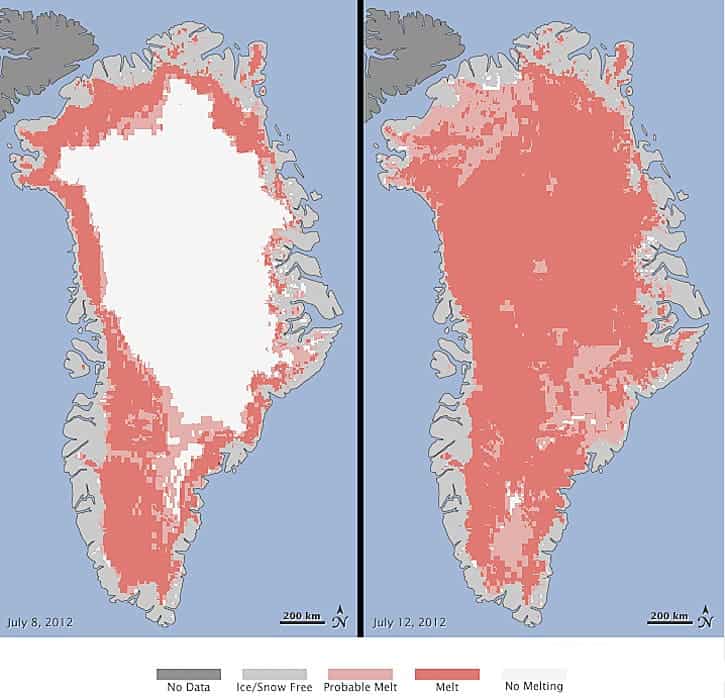
During just four days, from July 8 to July 12, Greenland’s total ice sheet surface subjected to melting rose from 40% to a whooping 97%. Basically the whole Greenland ice sheet was melting during this time frame. According to NASA, a situation similar to this mid-July phenomenon hasn’t been ever recorded in the three decades of satellite observations.
Now, melting of the ice sheet is always common during the summer, before refreezing during winter or running off into the ocean. However, this most recent phenomenon which virtually had Greenland’s entire surface subjected to melting is so peculiar, that not even scientists aren’t yet sure what to make of it. “[It] makes you sit up and ask what’s happening,” said NASA’s chief scientist Waleed Abdalati for TIME. Even Greenland’s coldest and highest place, Summit station, showed melting.
“You literally had this wave of warm air wash over the Greenland ice sheet and melt it,” NASA ice scientist Tom Wagner said Tuesday.
So far NASA scientists aren’t sure if this is a natural anomaly or somehow triggered by human-induced global warming. What they do do know for certain is that the edges of Greenland’s ice sheets have already been constantly thinning during the past decade due to climate change. Most likely, an unusually strong warm air, or heat dome, which had engulfed Greenland since May before dissipating on July 16, caused the event.
Just recently, we reported that an iceberg two times the size of Manhattan broke off from Greenland’s Petermann Glacier. In 2010 Greenland lifted by as much as three quarters of an inch after glaciers and ice sheets above its surface melted, amounting to a total of 100bn tones of melted ice.






